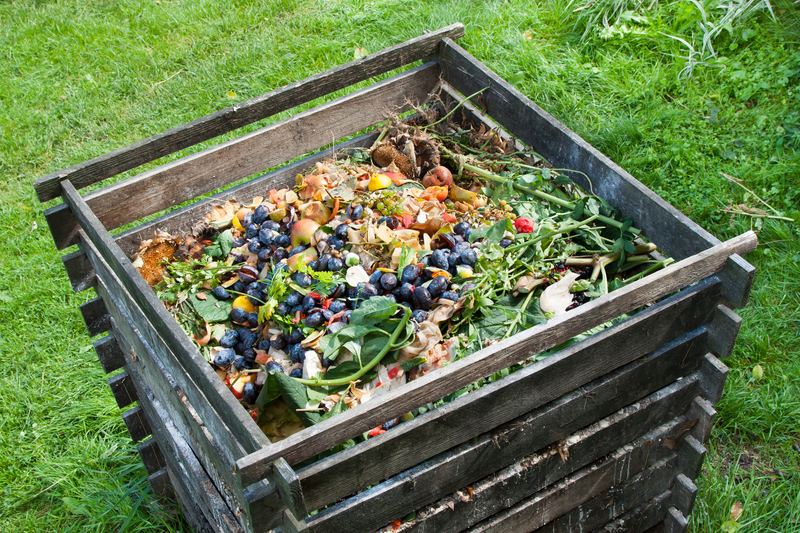Sustainable Choices to Replace Plastics
Posted on 19/09/2025
Sustainable Choices to Replace Plastics
As the global awareness of environmental issues grows, the spotlight shifts towards sustainable alternatives to traditional plastic. Conventional plastics, derived from fossil fuels, are notorious for their environmental impact, particularly in terms of pollution and waste. Fortunately, numerous eco-friendly options are available that can help mitigate these issues. Let's delve into the most promising sustainable choices to replace plastics.
Biodegradable Plastics
Biodegradable plastics, made from natural polymers, break down more quickly in the environment compared to conventional plastics. These eco-friendly alternatives are derived from renewable resources such as corn starch, potato starch, and sugarcane.
**Advantages:**
- Reduced environmental pollution
- Lower carbon footprint
- Derived from renewable resources
**Disadvantages:**
- May require specific conditions to biodegrade effectively
- Can be more expensive than traditional plastics

Plant-Based Plastics (Bioplastics)
Bioplastics, composed of materials such as polylactic acid (PLA), are derived from plant sources and are designed to reduce our dependence on fossil fuels. PLA is used in products like bottles, cups, and packaging materials.
**Advantages:**
- Renewable and biodegradable
- Lower greenhouse gas emissions
- Comparable performance to traditional plastics
**Disadvantages:**
- Industrial composting facilities may be required for proper biodegradation
- Limited recycling infrastructure available for bioplastics
Reusable Alternatives
A shift towards reusable products can significantly reduce plastic waste. Items such as reusable metal or glass straws, bamboo utensils, and cloth shopping bags offer sustainable options to everyday plastic products.
**Advantages:**
- Long-term cost savings
- Reduced single-use plastic waste
- Durable and often more aesthetically pleasing
**Disadvantages:**
- Higher initial cost
- Requires maintenance (cleaning and storage)
Natural Fibers
Materials like hemp, jute, and cotton are increasingly used to replace synthetic fibers in products such as bags, packaging, and clothing. These materials are not only biodegradable but also often require less energy to produce.
**Advantages:**
- Biodegradable and compostable
- Renewable and sustainable
- Reduced reliance on petrochemicals
**Disadvantages:**
- May have shorter durability compared to synthetic fibers
- Can be more expensive
Edible Packaging
Innovative solutions like edible packaging are emerging in the food industry. These materials are designed to be consumed along with the product, thus eliminating waste entirely. Examples include seaweed-based wraps and potato starch packaging.
**Advantages:**
- Zero waste
- No need for disposal
- Often high in nutritional value
**Disadvantages:**
- Limited applications
- May have a shorter shelf life
Mycelium
Mycelium, the root structure of mushrooms, is a promising material for sustainable packaging. It's grown into molds to create packaging that's compostable and biodegradable.
**Advantages:**
- Fully biodegradable and compostable
- Strong and durable
- Low energy requirements for production
**Disadvantages:**
- Limited scalability at present
- Higher production costs
Pros and Cons
Understanding the pros and cons of these sustainable alternatives is crucial for making informed choices.
**Pros:**
- Reduced environmental impact
- Lower carbon footprint
- Renewable resources
**Cons:**
- Higher initial costs
- Infrastructure challenges
- Limited scalability and availability
Tips for Making Sustainable Choices
1. **Research Products:**
Look for certifications such as "compostable" or "biodegradable."
2. **Invest in Reusables:**
Items like metal straws and cloth bags offer long-term benefits.
3. **Support Innovations:**
Choose products that use cutting-edge sustainable materials.
4. **Educate Yourself and Others:**
Spread awareness about the benefits of sustainable alternatives.
5. **Check Local Facilities:**
Ensure your area has the necessary composting or recycling facilities for the materials you choose.

Takeaways
- There are numerous sustainable alternatives to traditional plastics.
- Making informed choices can reduce environmental impact.
- Both biodegradable and reusable options offer significant benefits.
- Awareness and education are key to driving change.
Conclusion
Transitioning from traditional plastics to sustainable alternatives is essential for reducing our environmental footprint. Biodegradable plastics, plant-based plastics, reusable products, natural fibers, edible packaging, and mycelium-based materials offer promising solutions. While some challenges exist, such as higher costs and infrastructure needs, the long-term benefits make these alternatives worth considering. By making informed decisions and supporting innovative products, we can contribute to a more sustainable and eco-friendly future.




